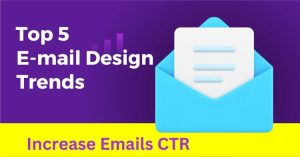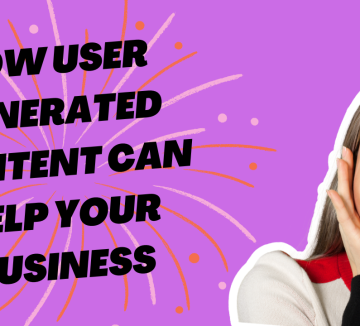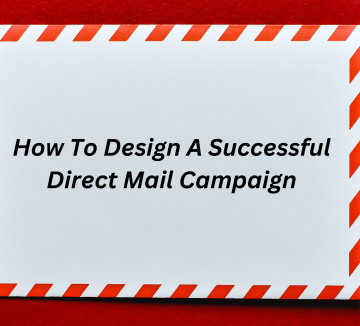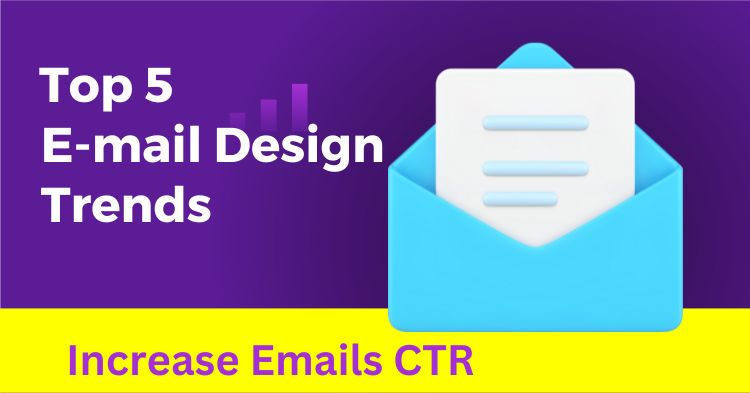Last Updated on April 8, 2023 by David
Email design trends are constantly evolving, and businesses must keep up with these changes to stay ahead of the competition.
With so many emails vying for attention in people’s inboxes, creating visually appealing and engaging email campaigns is crucial for driving engagement and conversions.
The importance of effective email design cannot be overstated. Design plays a vital role in capturing your audience’s attention and enticing them to engage with your content.
Whether it’s through interactivity, animation, or minimalist design, incorporating the latest email design trends can help you stand out and make an impact.
This article will explore some of the top email design trends driving business engagement and conversions.
By incorporating these trends into your email campaigns and following best practices for effective design, you can create emails that capture your audience’s attention and drive results for your business.
You May Also Like:
- The Step-by-Step Guide to Creating a Successful Email Campaign
- The Ultimate Guide to Building Email List
- 10 Proven Email Marketing Strategies To Increase Open Rates
Let’s dive in!
- Focus on Creating Interactive Emails
Interactive emails allow users to interact with the content of the email directly within their inbox.
This can include features such as hover effects, clickable buttons, and scrolling carousels.
Creating interactive emails is important in increasing engagement, driving conversions, and providing a more personalized and memorable experience for recipients.
Tips for creating effective interactive emails:
- Keep it simple: Make sure your readers have enough interactive features. Stick to one or two interactive elements that are easy to use and enhance the user experience.
- Focus on user experience: Ensure that the interactive elements you include in your emails are intuitive and easy to use. Make users work only a little hard to engage with your content.
- Test, test, test: Make sure to thoroughly test your interactive emails on different email clients and devices to ensure that they work as intended.
- Use animation wisely: Animation can be a powerful tool in interactive emails, but use it sparingly and strategically. Too much animation can be distracting and overwhelming.
- Be responsive: Make sure your interactive emails are optimized for mobile devices, as more and more people are accessing their email on their phones.
- Personalize the experience: Use your data about your subscribers to create personalized interactive experiences tailored to their interests and preferences.
- Provide value: Ensure that the interactive elements you include in your emails provide value to your subscribers. Interactive content should enhance the user experience, not detract from it.
By following these best practices, you can create engaging and effective interactive emails that help you stand out in your subscribers’ inboxes and drive the results you’re looking for.
Dark Mode To Reduce Eye Strain
Dark mode is one of the popular email design trends in recent years, and this is because it has been found to offer several benefits for users and email marketers alike.
One of the primary advantages of dark mode is that it reduces eye strain by reducing the amount of blue light emitted by screens.
This can be particularly beneficial for users who spend a lot of time reading emails or working on their devices.
In addition to reducing eye strain, dark mode can also increase engagement by making emails more visually appealing and easier to read.
The high contrast between dark backgrounds and light text can draw the reader’s attention and make it easier to focus on the message.
Dark mode can also enhance accessibility for users with visual impairments or disabilities.
By providing a high-contrast viewing experience, dark mode can make it easier for these users to read and interact with email content, improving their overall user experience.
From a design perspective, using dark mode in email design can give your brand a modern, up-to-date look and feel.
This can help your brand stand out in a crowded inbox and make a positive impression on your audience.
Dark mode is compatible with various devices and platforms, including desktop and mobile.
This means that by designing emails for dark mode, you can ensure that your emails look good and are easy to read on various devices, which can help improve the effectiveness of your email campaigns.
Best practices for designing emails in dark mode
Here are some best practices for designing emails in dark mode:
- Use high contrast colors: When designing emails for dark mode, it’s important to use colors with a high contrast ratio. This will ensure that your text and images are easy to read and stand out against the dark background.
- Avoid pure black: While pure black can be an effective color for text and other design elements in light mode, it can be too harsh in dark mode. Instead, opt for a slightly lighter black or dark grey shade.
- Test your design: Make sure to test your email design in both light and dark modes to ensure it looks good. Some elements, such as images or background colors, may need to be adjusted for optimal viewing in dark mode.
- Use scalable vector graphics: Scalable vector graphics (SVGs) are a great choice for designing icons and other graphics for dark mode emails. Unlike raster images, which can become pixelated when scaled up or down, SVGs retain their clarity and sharpness.
- Consider your brand identity: Your email design should reflect your brand identity and be consistent with your other marketing materials. When designing for dark mode, make sure to use colors and design elements that are consistent with your brand.
By following these best practices, you can create effective email designs that look great in both light and dark modes.
Remember to test your design and consider your brand identity when designing for dark mode, and you’ll be well on your way to creating successful email campaigns that engage and inspire your audience.
Consider Animated Emails
Animated emails are also one of the fastest spreading email design trends involving animations, videos, and GIFs to add movement and interactivity to emails.
This can help capture subscribers’ attention, communicate complex ideas simply and engagingly, and make emails more memorable.
One reason animated emails work so well is that they create a sense of excitement and anticipation in the viewer.
Adding movement to your emails can make them more dynamic and visually interesting, which can help increase engagement and click-through rates.
Best Practices for Implementing Animated Emails
- Keep it easy to understand: Animated emails should be simple and easy to understand. Refrain from overloading your email with too many animations or moving elements, which can be distracting and overwhelming.
- Use animation to tell a story: Animated emails are a great way to tell a story or communicate a message simply and engagingly. Use animation to highlight key points or demonstrate a product or service.
- Use GIFs and videos: GIFs and videos can be a powerful tool for creating animated emails. Use them to show off your products or services, highlight special offers or promotions, or add a playful touch to your emails.
- Optimize for mobile: Ensure your animated emails are optimized for mobile devices. This means using a responsive design that adapts to different screen sizes and ensuring that your animations don’t take too long to load.
- Test, test, test: Make sure to test your animated emails on different email clients and devices to ensure they work as intended.
Testing is especially important when using videos or animations, as some email clients may only support them.
Overall, animated emails can be a powerful tool for increasing engagement and driving conversions in your email marketing campaigns.
By following these best practices and experimenting with different types of animation, you can create compelling and effective emails that capture your subscribers’ attention and help grow your business.
Embrace Minimalism in Your Email Designs
Minimalism in email marketing is a design approach that uses a clean and simple layout, minimal text, and a limited color palette to create a visually appealing and easy-to-read email.
The idea behind minimalism is to remove any unnecessary elements from the email design, leaving only the essential information needed to convey the message.
Reasons Minimalism Matters in Email Marketing:
- It increases readability: A minimalist email design makes it easier for the reader to scan and understand the content of the email.
By removing distractions and unnecessary elements, the reader can focus on the most important information.
- It improves load time: A minimalist email design typically includes fewer graphics and images, so the email loads faster. This is important because many people will only abandon an email if it takes less time to load.
- It creates a modern look: Minimalism is a popular design trend in many areas of digital marketing, and it can help to create a modern and stylish look for your emails.
- It can increase conversions: A minimalist email design can help create a clear and focused message, leading to higher click-through rates and conversions. When implementing a minimalist email design, it’s important to consider the following best practices:
- Use plenty of white space: White space (the empty space between design elements) is a key component of a minimalist email design. Use it to create a clean and uncluttered look.
- Keep the design consistent: Consistency is important in a minimalist email design. Use a limited color palette and stick to a consistent layout and design elements throughout the email.
- Use clear and concise copy: Keep the text in your email short and to the point. Use bullet points or numbered lists to break up longer sections of text.
- Use high-quality images: If you include images in your email, ensure they are high-quality and add value to the email. A minimalist email design can help create a clear, focused message that resonates with your audience.
By following these best practices and experimenting with different design elements, you can create effective and visually appealing emails that drive results for your business.
Accessibility
Accessibility refers to the design of email marketing campaigns that are accessible and usable to all people.
This includes individuals with visual, auditory, or motor impairments and those who use assistive technologies such as screen readers or voice commands to navigate the web.
Here are some reasons why accessibility in email marketing campaigns matters:
- It promotes inclusivity: By designing emails that are accessible, you can ensure that your message is reaching the widest possible audience, including those with disabilities. This helps to promote inclusivity and diversity in your marketing efforts.
- It improves user experience: Accessible emails are easier to navigate and understand, which can improve the user experience for all subscribers, not just those with disabilities. This can lead to increased engagement, click-through rates, and conversions.
- It is a legal requirement: In many countries, including the United States, accessibility in digital content is required by law. Failing to make your email marketing campaigns accessible could result in legal consequences.
Best Practices for Designing Accessible Email Marketing Campaigns
- Use clear and concise language: Make sure that your email copy is clear and easy to understand. Use simple language and avoid jargon or technical terms that may be confusing.
- Use descriptive alt text: Alt text is a description that is added to images and other non-text content, which can be read by screen readers. Use descriptive alt text to ensure that all subscribers, including those with visual impairments, can understand the content of your email.
- Use a simple layout: Keep your email layout simple and uncluttered, with clear headings and a logical structure. This makes it easier for all subscribers to navigate and understand your message.
- Test with assistive technologies: Make sure to test your email design with assistive technologies such as screen readers, to ensure that all subscribers can access your content.
By designing email marketing campaigns with accessibility in mind, you can ensure that your message reaches the widest possible audience and improve the user experience for all subscribers.
Tools and Resources for Email Design
Tools and resources for email design refer to the software, templates, and other resources that can help you create professional-looking and effective email campaigns.
These tools can include email design software, email marketing platforms, pre-built templates, stock photos, and more.
Examples of tools and resources for email design include:
- Email design software: There are several software options available, such as Canva, Adobe Creative Cloud, and Sketch, that can help you design custom email templates and graphics.
- Email marketing platforms: Platforms like Mailchimp, Constant Contact, and Hubspot offer built-in email design tools and templates, as well as automation features and analytics to track the performance of your email campaigns.
- Pre-built templates: Many email marketing platforms offer a variety of pre-built email templates that you can customize to fit your brand and message.
- Stock photos: Stock photo websites like Unsplash and Shutterstock offer a wide selection of professional-quality images for your email campaigns.
Benefits of Using Tools and Resources for Email Design
- Time savings: Using pre-built templates and design tools, you can save time on the design process and focus on creating effective content and messaging for your email campaigns.
- Consistency: Using consistent design elements and templates ensures that your email campaigns have a cohesive look and feel that reflects your brand identity.
- Professionalism: Using high-quality images and design elements can help give your email campaigns a professional and polished look, increasing engagement and conversions.
- Flexibility: With the right tools and resources, you can easily experiment with different design elements and templates to find what works best for your audience and messaging.
Overall, leveraging tools and resources for email design can help you create effective email campaigns that engage your audience and drive results for your business.
Additional Email Design Tips and Best Practices
In addition to the five design trends, some general best practices can help improve your email campaigns’ engagement and effectiveness.
These include optimizing for mobile devices, maintaining branding consistency, choosing fonts that are easy to read, and using color psychology to influence the emotions of your recipients.
Let’s look at each of them and why it matters in email marketing.
- Optimizing for mobile devices
Optimizing email campaigns for mobile devices involves ensuring your emails are formatted and designed to look good on smartphones and tablets.
This can include using a responsive design that automatically adjusts to different screen sizes, using shorter subject lines, and simplifying the email design for easy scanning.
This matters because many people are accessing their emails on mobile devices. Optimizing your email for mobile can lead to a better user experience and higher engagement rates.
- Maintaining branding consistency
Maintaining branding consistency in email campaigns involves using the same brand elements, such as colors, fonts, and imagery, in all of your email communications.
This helps to create a cohesive and recognizable brand image that can build trust and recognition with your audience.
To achieve this, you can use email templates that incorporate your brand colors and imagery, and make sure to use the same font and style in all of your communications.
- Choosing fonts that are easy to read
Choosing easy-to-read fonts for your email campaigns is important because it helps ensure your audience easily understands and consumes your message.
Sans-serif fonts like Arial or Helvetica are often recommended for email campaigns because they are simple, clear, and easy to read on different devices and screen sizes.
Avoid using overly stylized or decorative fonts that can be difficult to read, especially on smaller screens.
- Using color psychology to influence the emotions of your recipients
Using color psychology involves choosing colors that evoke specific emotions or associations in your audience.
For example, blue is often associated with trust and reliability, while red can be associated with excitement or urgency.
Using colors strategically in your email campaigns can influence how your audience feels about your message and increase engagement.
However, it’s important to use color sparingly and not rely on it as the sole element in your email design.
Overall, these best practices can help improve the engagement and effectiveness of your email campaigns by ensuring that they are designed with your audience in mind and optimized for easy consumption and understanding.
Conclusion
In conclusion, email design plays a crucial role in the success of your email marketing campaigns.
By following the five design trends outlined in this article and implementing the design tips and best practices, you can create emails that stand out from the competition and drive results.
Additionally, by utilizing email marketing techniques and taking advantage of the tools and resources available, you can create effective and efficient campaigns.
Remember, the key to successful email marketing is continuously testing and optimizing your campaigns based on the data and feedback you receive.
By doing so, you can continue to improve your engagement rates and drive better results for your business.
Email design trends refer to the latest design styles and techniques that businesses use to create visually appealing and engaging emails.
Email design trends are important because they help businesses stand out in a crowded inbox, capture the audience’s attention, and drive engagement and conversions.
Interactive emails can increase engagement rates, improve user experience, enhance brand awareness, and increase ROI for businesses.
Email service providers, interactive email builders, and third-party tools and plugins are available for businesses to create visually appealing and engaging emails.




